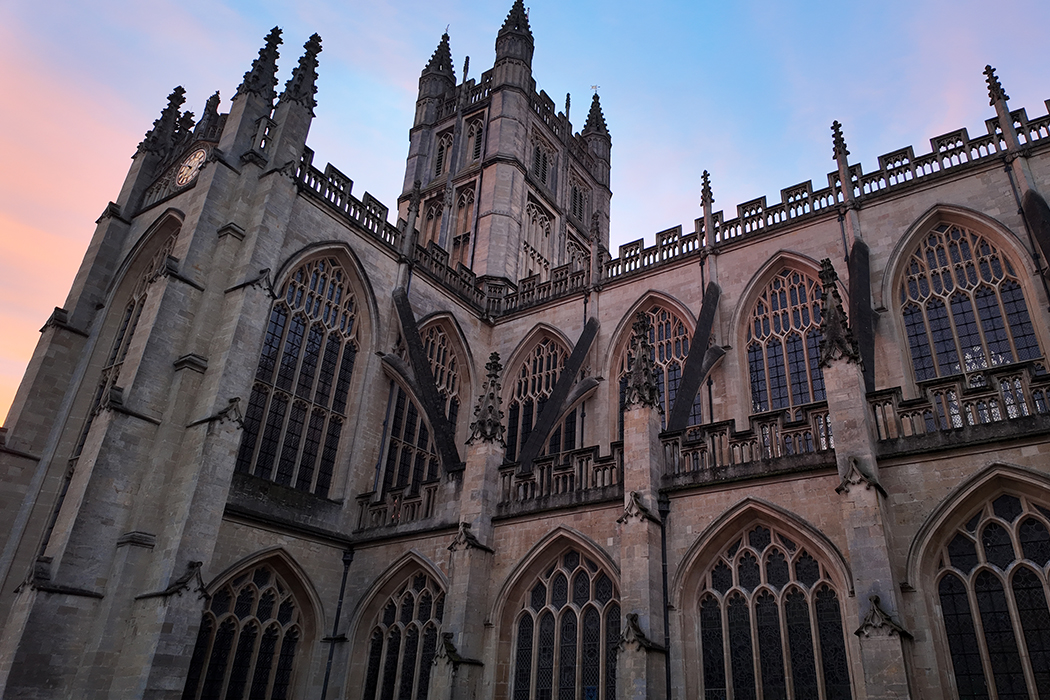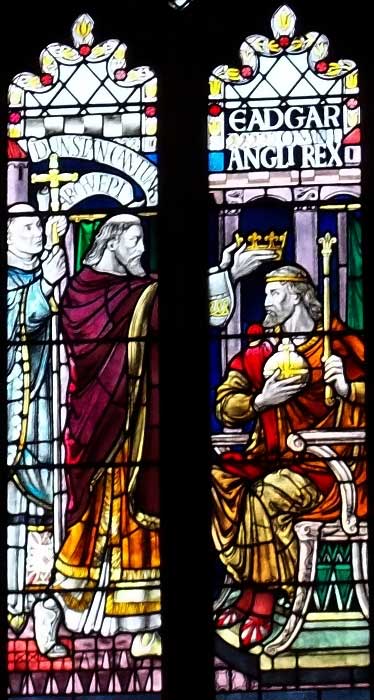Dominating the city centre, Grade I listed Bath Abbey is one of the largest examples of perpendicular Gothic architecture in the West Country and it is noted for its fan vaulting and its 52 windows, which comprise 80% of the abbey’s wall space.
The parish church was founded on the site in the 7th century and it was rebuilt in the 11th and 16th centuries with major restoration completed in the 18th century by Sir George Gilbert Scott.
Bath Abbey is a historically significant church. Its origins date back to 675 AD when King Osric of Hwicce grated Abbess Berta land to establish a convent, which was taken by King Offa of Mercia in 781. In 973 Edgar the Peaceful was crowned King of the English at the abbey, although Edgar had already been king for 14 years by the time of his coronation. Edgar’s coronation, organised by St Dunstan, was considered the pinnacle of his reign and this formed the basis of the modern coronation ceremony.

What to see at Bath Abbey
Bath Abbey is one of the largest examples of perpendicular Gothic architecture in the West Country and its architectural features include a fan-vaulted ceiling and stained glass windows.
The beautiful fan-vaulted ceiling is one of the most striking features of Bath Abbey. This dates from the early 1500s and was built by architects Robert and William Vertue; however, it was constructed over a long period of time with the more recent sections only completed in the 17th century. Robert and William Vertue also designed a similar fan-vaulted ceiling for the Henry VII chapel at Westminster Abbey.
![Bath Abbey looking west from the choir showing the more recent portion of the abbey's fan-vaulted ceiling. (Photo by David Iliff. Licence: [CC BY-SA 3.0])](https://englandrover.com/wp-content/uploads/2018/09/bath-abbey-west-from-choir.jpg)
![Stained glass window and altar at the eastern end of the nave of Bath Abbey. (Photo by David Iliff. Licence: [CC BY-SA 3.0])](https://englandrover.com/wp-content/uploads/2018/09/bath-abbey-stained-glass.jpg)

The abbey’s Gethsemane Chapel is a small chapel dedicated to remembrance featuring an Amnesty candle and a book of remembrance that records the details of Bath residents killed during the Second World War.
There are 1,482 memorials at Bath Abbey, which represent a cross-section of society from regular working-class people to wealthy industrialists and it also includes memorials to notable figures such as celebrated 18th-century social figure, Beau Nash, the developer of Pitman shorthand, Isaac Pitman and the first governor of New South Wales, Admiral Arthur Phillip. These memorials are comprised of 635 wall tablets (only Westminster Abbey has more) and 847 memorials set into the floor of the abbey.
![Bath Abbey's 16th-century West Door. (Photo: Diego Delso [CC BY-SA 4.0])](https://englandrover.com/wp-content/uploads/2018/09/bath-abbey-west-door.jpg)
Visiting Bath Abbey
Bath Abbey is in the historic centre of Bath and most points of interest in the city centre are no more than a 10-minute walk away.
Admission costs £8 and there is an additional £3.50 charge for the audio tour.
Most areas of Bath Abbey are wheelchair accessible with the exception of the tower, which is accessible only via a narrow spiral stone staircase.
The abbey has its own on-site gift shop and its location in the historic centre of Bath means that there are plenty of places to eat and drink nearby.
Although it is possible to make a quick visit in just 15 minutes, a visit of half an hour to an hour is more reasonable if want to properly appreciate the abbey.
Book your tickets to Bath Abbey
Save time by pre-booking your tickets to Bath Abbey in Bath, Somerset.
We may earn a small commission if you buy your tickets after clicking this link.


There are no comments yet.